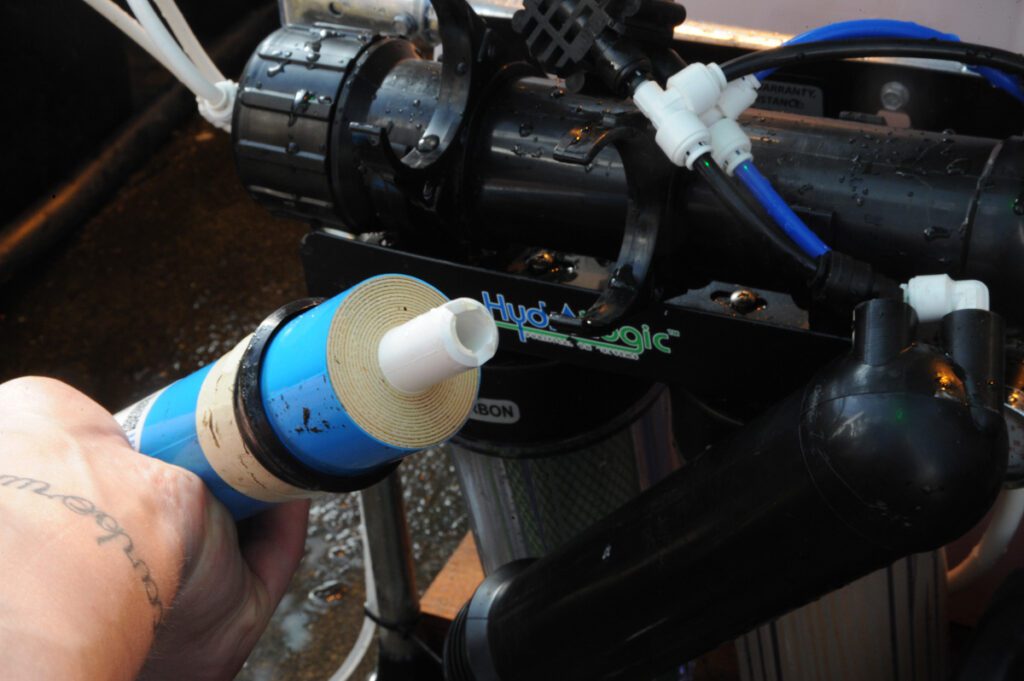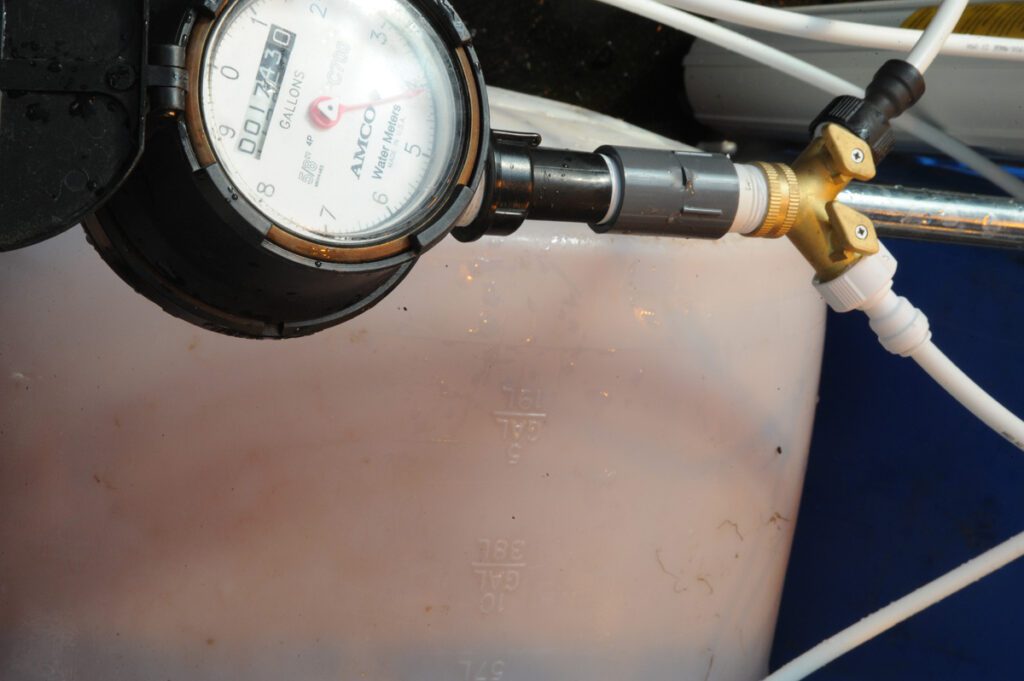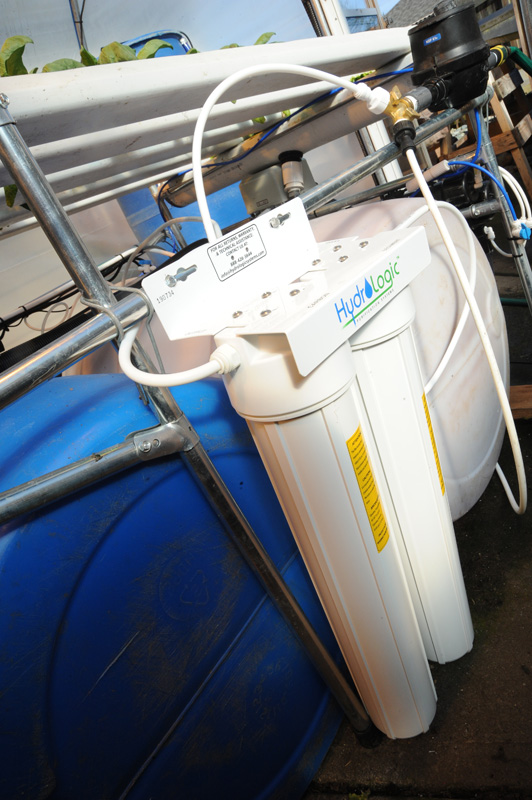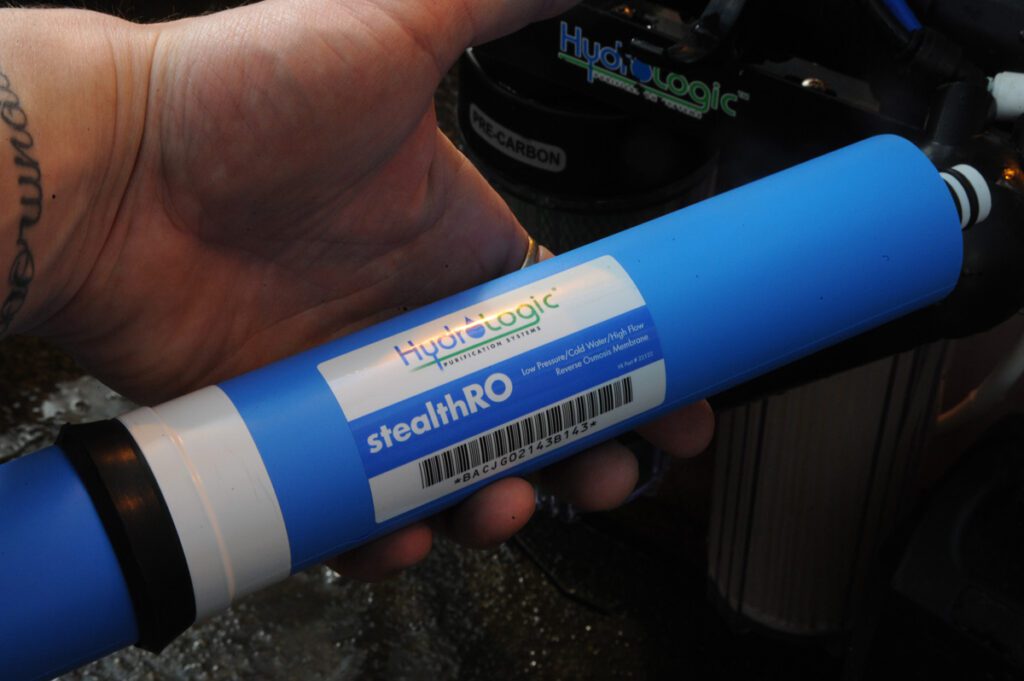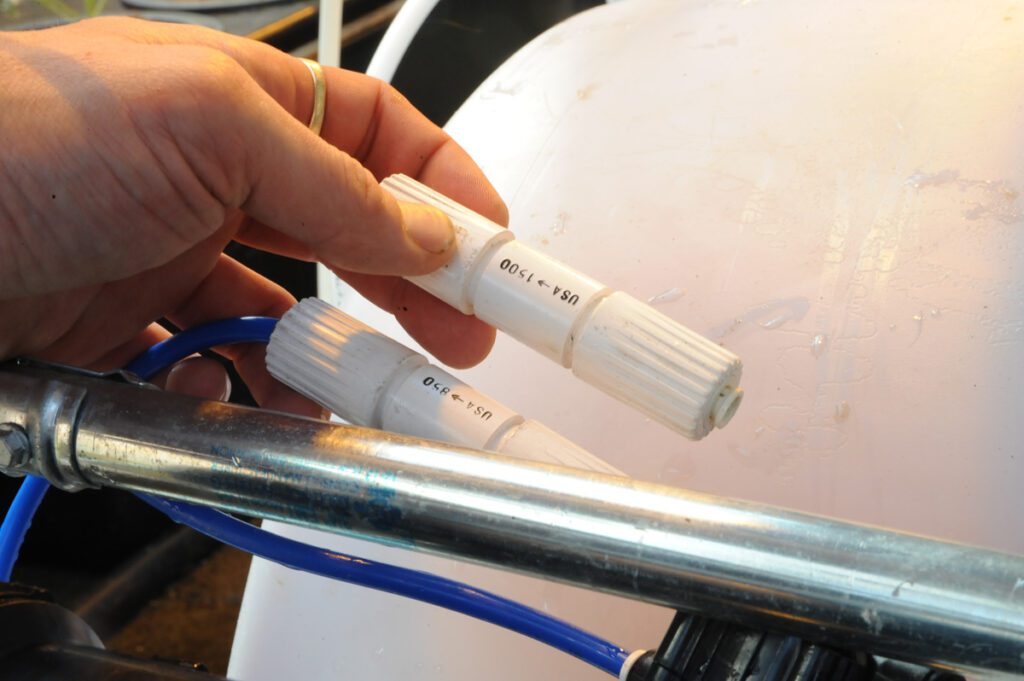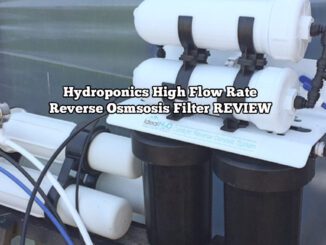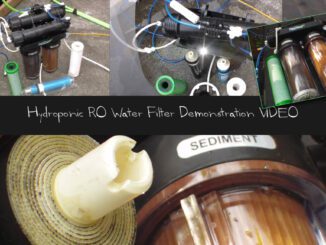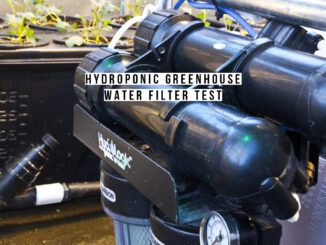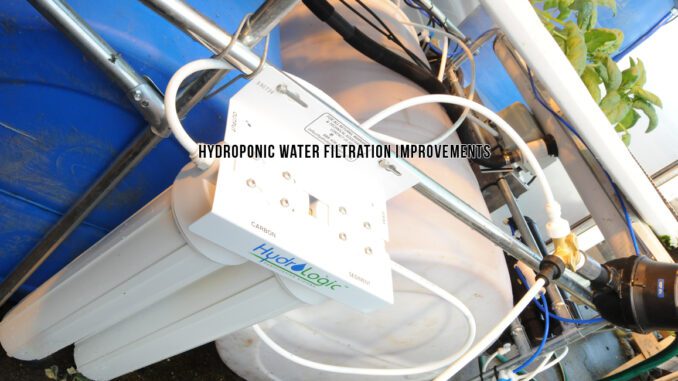
Hydroponic Water Filtration Improvements
Less Waste & More Flow to Better Grow!
Recently, we conducted a hydroponic greenhouse grow trial to assess what kinds of differences we would see in crop (Kale, Lacinato) growth using two different types of water filtration systems in our RDWC (Recirculating Deep Water Culture, AKA “Under Current”). You can see the results and details | HERE |. Based on our findings we conducted further research to see how we could make some further Hydroponic water filtration improvements.
This led us to some discussion with Rich Gellert, an industry leading expert in the field of water purification for hydroponics and organics gardening (hydrologicsystems.com). Firstly, we identified our list of objectives, as related to hydroponic water filtration improvements, as follows:
Reverse Osmosis Water Filtration Wish List
Less Waste: RO (Reverse Osmosis) filtration proved to be the champion versus single stage simple carbon filtration in no time at all. However, most RO units, including our Stealth 200, operate a standard discharge of 4:1. That’s Four parts of waste water that need to be managed for every One part of highly purified water captured. Given potential watering restrictions, the cost of water and the hassle of managing (or worse, disposing) of all that waste water this just isn’t practical or acceptable for our purposes in growing hydroponics crops.
Faster Collection: There are some very large commercial units available, for example the HyperLogic, which can handle around 10,000 Gallons per Day, however, this seems like overkill for our back yard hydroponic greenhouse purposes. Our Stealth 200 unit is rated for 200 GPD, but we wish it could collect water for hydroponic use faster–without having to go and buy a new system.
Activated Carbon Water Filtration Wish List
Higher Flow Rate: While our single stage garden water filter (Gro Green) is fine when used to collect water for the garden in our watering barrel (and quite a bit faster vs RO collection), it’s a challenge to keep up with keeping our back yard vegetable garden hydrated with healthy water that is palatable to plants and that won’t kill off our beneficial soil life during hot summer months. Further, there are occasions that require us to fill a solo system or even one of the bigger hydro systems in our greenhouse unexpectedly–so the ability to fill up fast with healthy filtered water is important. Long story short, we need more clean water and faster for practical purposes.
Greater Purification: The crops we grow outdoors in our organic and soilless beds showed a big difference last season once we started using our single stage Gro Green carbon filter versus watering straight from the household spigot, however, during our hydroponic greenhouse water filtration evaluation (here) the difference between RO and Single Stage filtration was simply too great to ignore–and only after a two week trial. While we loved the fact that no waste water was created, a single stage carbon filter wasn’t going to cut it for hydroponic crops grown in our RDWC systems located in the climate controlled greenhouse.
Hydroponic Water Filtration Improvements: The Solutions
[ml-adverts location=home-page-content-banner-3]
Carbon Filtration for Hydroponics: Upgrading to a Two-Stage filter (sediment + carbon) with a higher capacity proved to be the ticket here. The Tall Boy is a bargain for what it offers: very good purification for garden and hydroponics water filtering with ZERO waste water, and a very high rate of flow. About $125 MSRP.
TIP: When it comes time to replace the Carbon filter, we’ll upgrade to the KDF material which as stated:
“The Hydro-Logic Tall Boy Complete with KDF removes up to 99% of chlorine and chloramine, 90% of sediment, rust, silt, etc. and volatile organic compounds and particulates down to 5 microns @ 2 GPM. Easily produces 120 gallons per hour of clear water and has a filter capacity of 7,500 gallons. Great as a high capacity pre-filter for Stealth RO units.”
Reverse Osmosis Filtration for Hydroponics: We are very pleased to have fine tuned our original Stealth 200 to achieve near 2:1 waste to captured water ratios with very little sacrifice in final water quality for use in our hydroponics greenhouse. We simply switched the RO membranes to Low Pressure, Cold Water & High Flow Through designations and swapped out the flow capacity regulators. With the simple change that took less than 5 minutes to complete we literally doubled our waste water efficiency for RO water filtration for use in hydroponics.
Here’s the Official Explanation on How it Works:
“With the help our new membrane one can achieve better flow rates than with a standard Stealth membrane (HL# 22120). The only drawback to the new membrane is it has a slightly lower ppm rejection percentage. This means that the ppm of the product water will be slightly higher with a low pressure, cold water, high flow membrane than with a standard Stealth membrane. The new membrane averages 93% rejection while the original Stealth-RO membranes has an average rejection of 98%. Another benefit of the new membrane is with standard pressures and temperatures (ie: 60 psi and 70 F water) you can expect your RO flow rates to almost double!!!”
15 Second Video Demonstration of Improved Garden Water Filtration:
Waste Water is Left Hand Facing, Product Water (for plants) is on the right. Watch the rate at which the glasses fill–BIG improvement versus previous 4:1 waste to product water ratios, and plants are still tickled with the quality. To achieve this, we installed our Tall Boy Two stage water filter before the Stealth RO Filter. Along with the cold water membranes we installed in the Stealth RO Filter, we have great water quality for crops with waste water levels that are manageable for our gardening situation. Overall water quality in captured water for gardens is <0.1 EC (less than 70 PPM), Waste water is >1.0 EC (over 750 PPM)

